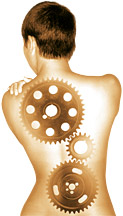How to Rehab the Right Way
By Jasper Sidhu, DC
With the exception of professional athletes, few people know where to turn after suffering an injury that limits their ability to exercise, perform daily activities - or in worse-case scenarios, even move. The rehabilitation process may seem complicated, but it's actually fairly straightforward (depending on the injury) once you know the basics. Here's a little insight on how to rehab right.
A patient once told me that to really understand their pain and difficulty in getting better, all doctors should experience the same pain so they are more sensitive to what it's really like. Now that I have been undergoing rehab for several months following knee surgery late last year, I can see her point. Rehab is not simply about doing a group of exercises and getting better. It's about knowing what works, what doesn't, what you should avoid, and what you can expect with your rehab. Do you know how to rehab right? Let's review a few of the most important rehab points to remember if you're ever faced (or are currently suffering) an injury, particularly one that causes pain in the low back, the shoulder or the knee - three of the most commonly injured areas of the body.
What Is Rehab?
 Without relying too much on medical terminology, rehab essentially involves any sort of exercise or exercises that will help get you back to as normal as possible following an injury. For most people, this usually consists of basic stretching and strengthening exercises. But did you know that it also involves proprioception (balance) training, endurance exercises, and functional training (training that improves activities of daily living that may have been compromised by your injury)? Rehab also requires a step-by-step system that builds on your successes for you to get to the next level.
Without relying too much on medical terminology, rehab essentially involves any sort of exercise or exercises that will help get you back to as normal as possible following an injury. For most people, this usually consists of basic stretching and strengthening exercises. But did you know that it also involves proprioception (balance) training, endurance exercises, and functional training (training that improves activities of daily living that may have been compromised by your injury)? Rehab also requires a step-by-step system that builds on your successes for you to get to the next level.
Successful Rehab: Six Steps to Remember
1. Control the pain naturally. To do this, some say use ice; some say use heat. Just remember one thing: If you are exercising and experience pain and swelling afterward, use ice to take the swelling down. If you feel your muscles are too stiff and painful before you start exercising, use a few minutes of heat to warm up the area. Using ice or heat during rehab is a good way to control pain and discomfort.
2. Increase flexibility. Everyone is infatuated with stretching. However, in some cases, it may not be the most important part of your rehab. There are a few things to remember with stretching. Don't try to become the next Olympic gymnast. Overstretching is just as bad as not stretching. Also, it's not just about stretching the areas where you're experiencing problems. It's also about stretching the tight muscles around the area, because the whole area works together. If one muscle stays tight, it will just pull the other ones into getting tight again. Your doctor can help evaluate which muscles are tight and recommend appropriate stretching exercises.

